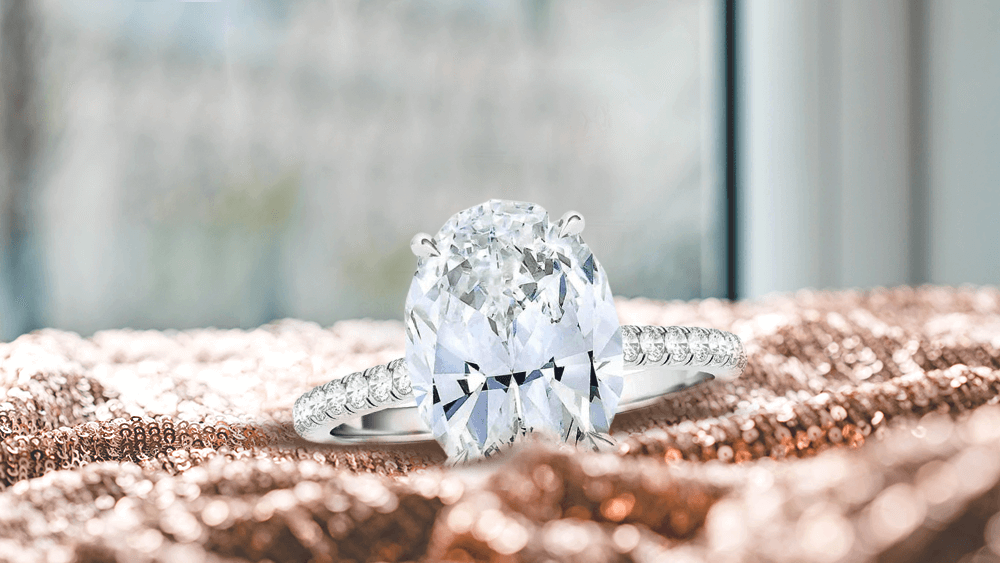Diamonds have long been considered the epitome of luxury and sophistication. Their unparalleled sparkle and beauty have made them the preferred choice for engagement rings, fine jewelry, and other sentimental pieces. However, with the rising popularity of moissanite, a gemstone that bears a striking resemblance to diamonds, many people are left asking the question, "Does moissanite sparkle like a diamond?"
Moissanite is a rare, naturally occurring mineral composed of silicon carbide. It was first discovered in 1893 by Dr. Henri Moissan, a French chemist, within a meteor crater in Arizona. Initially, Moissan believed he had found diamonds, but upon further examination, he identified the mineral as a new and distinct substance. Today, moissanite is primarily created in laboratories, making it an ethical and affordable alternative to diamonds for use in jewelry.
In this comprehensive article, we will explore moissanite's properties and compare its sparkle to that of a diamond, helping you make an informed decision when choosing between these two stunning gemstones.
Does Moissanite Sparkle Like a Diamond?
Both moissanite and diamond possess unique physical properties that contribute to their respective sparkle and brilliance. Some of the key factors that influence their appearance include:
Refractive Index: This measures the degree to which light is bent as it passes through a gemstone. A higher refractive index typically results in greater sparkle.
Dispersion: Dispersion refers to a gemstone's ability to split white light into its spectral colors, creating a "fire" effect.
Hardness: The hardness of a gemstone determines its resistance to scratches and abrasions, which can impact its overall appearance over time.
While both moissanite and diamond are known for their impressive sparkle and brilliance, there are some notable differences between the two. Moissanite has a higher refractive index than diamond, meaning it bends light more sharply, resulting in a more intense sparkle. Additionally, moissanite exhibits greater dispersion, which gives it a more fiery appearance as it splits light into various colors. In contrast, diamonds are renowned for their bright, white flashes of light and their classic sparkle.
In terms of durability and hardness, moissanite is an excellent contender against diamonds. Although not quite as hard as diamond, which ranks as a 10 on the Mohs scale of mineral hardness, moissanite comes in at an impressive 9.25. This makes it one of the hardest materials known to man and highly resistant to scratching and everyday wear.
Moissanite Sparkle:
The optical properties of moissanite contribute to its unique sparkle and overall appearance. Its high refractive index and dispersion allow it to bend light more sharply and display a greater range of colors than diamond. These characteristics give moissanite a distinct, fiery sparkle that sets it apart from other gemstones.
When comparing moissanite's sparkle to that of a diamond, it is essential to note their differences in refractive index and dispersion. Moissanite's higher refractive index and greater dispersion result in a more colorful, fiery sparkle compared to the bright, white flashes of light associated with diamonds.
To maximize moissanite's unique sparkle, it is crucial to select a high-quality cut. A well-cut moissanite will optimize its optical properties, allowing it to reflect light beautifully and showcase its fiery characteristics. Some popular cuts for moissanite include round brilliant, cushion, and oval, each offering a different level of sparkle and fire.
[source]
As seen in the image above, moissanite exhibits a vibrant, fiery sparkle with a stunning display of colors that set it apart from diamond.
Diamond Sparkle:
Diamonds are prized for their exceptional optical properties, which give them their unique sparkle and brilliance. Their high refractive index and lower dispersion compared to moissanite result in bright, white flashes of light, creating the classic diamond sparkle that has captivated people for centuries.
In comparison to moissanite, diamonds exhibit a brighter, whiter sparkle, with less emphasis on colorful flashes. This difference is due to their lower dispersion, which prevents diamonds from splitting light into as many spectral colors as moissanite.
To enhance a diamond's sparkle, it is vital to choose a high-quality cut. A well-cut diamond will maximize light reflection, giving it a brighter and more sparkly appearance. Popular cuts for maximizing diamond sparkle include round brilliant, princess, and cushion.




